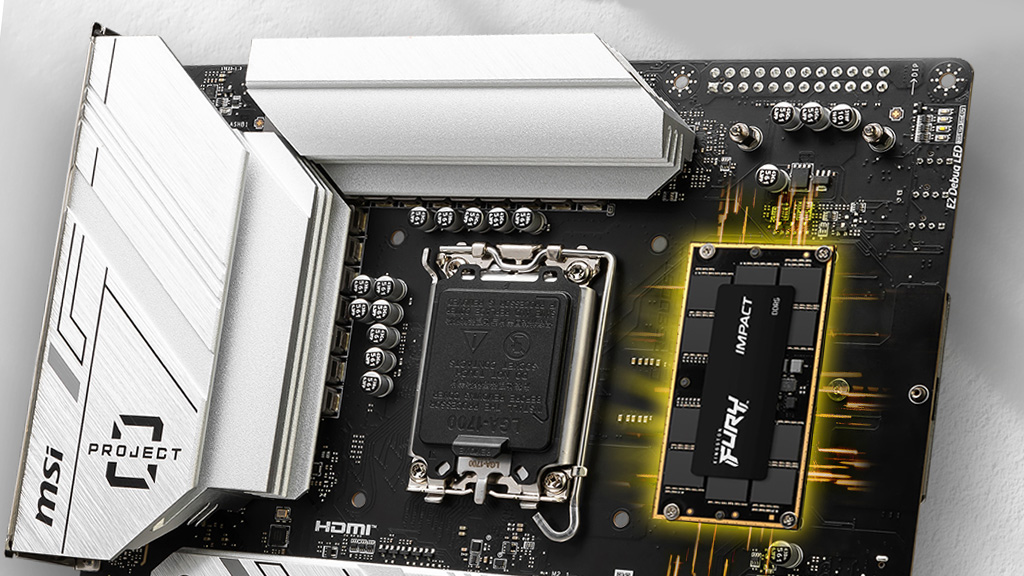JEDEC’s new CAMM2 memory design has been primarily advertised as a laptop-designed memory module. While that may be the case, not many know that the CAMM2 JEDEC standard also features desktop support. MSI has partnered with Kingston to purportedly build theworld’s first Z790 desktop motherboard with CAMM2 memory. The new board will be showcased atComputex2024 early next month.
The board, called the Z790 Project Zero Plus, features a black and silver finish. As the name suggests, this board takes advantage of backside connectors, similar to MSI’s outgoingProject Zeromotherboards, for better cable management. To the right of the CPU socket, the four DDR5 DIMM slots have been replaced by a single CAMM2 module placed horizontally on the board and installed with four screws.

MSI and @kingstontech are previewing the next revolution in memory design, the DDR5 CAMM2. Featured on a Z790 PROJECT ZERO PLUS, the Kingston FURY Impact DDR5 CAMM2 prototype module demonstrates the compact size, thin profile, and potential OC performance.#MSIxComputex2024 pic.twitter.com/vAhVB12zrIMay 23, 2024
CAMM2is a brand-new memory standard that aims to replace the SO-DIMM form factor, which has been around for over two decades. CAMM2 merges the capabilities of dual-channel SO-DIMM configurations into a single module, making it 64% smaller than typical DDR5 SO-DIMM laptop configurations while at the same time being able to saturate the full 128-bit memory bus of modern-day CPUs.

Another advantage of CAMM2 is its memory support. Not only does CAMM2 support vanilla DDR5 memory modules, JEDEC has also provided a format that works with fasterLPDDR5Xmemory modules. This flexibility enables CAMM2 to significantly outperform SO-DIMM DDR5 in terms of memory bandwidth. The latest CAMM2 LPDDR5X modules are rated as high as7,500 MT/s, and future CAMM2 LPDDR5X modules are expected to run even higher than that.
The Kingston Fury Impact CAMM2 module being used in MSI’s new motherboard, unfortunately, will not be using the LPDDR5X version of the standard, relegating the module to JEDEC DDR5 speeds. That said, we fully expect Kingston to apply anXMPprofile to the module which could potentially bring its memory performance up to LPDDR5X speeds with superior latency.
It’s great to see MSI giving us a sneak peek at what the CAMM2 memory standard can do on desktops with its newZ790 motherboard. It will be very interesting to see how CAMM2 functions on a desktop motherboard where the module can be tuned for better performance — rather than a mix of performance and power efficiency, as is the case with laptops.
The biggest question that remains is if there are any serious advantages for CAMM2 on mainstream desktop motherboards. In a desktop environment, memory size is not nearly as big of a concern as it is in laptops, and CAMM2’s size advantage is therefore mostly irrelevant. But it will be more relevant insmall form factormachines, where size does play a role.
Get Tom’s Hardware’s best news and in-depth reviews, straight to your inbox.
Aaron Klotz is a contributing writer for Tom’s Hardware, covering news related to computer hardware such as CPUs, and graphics cards.